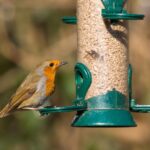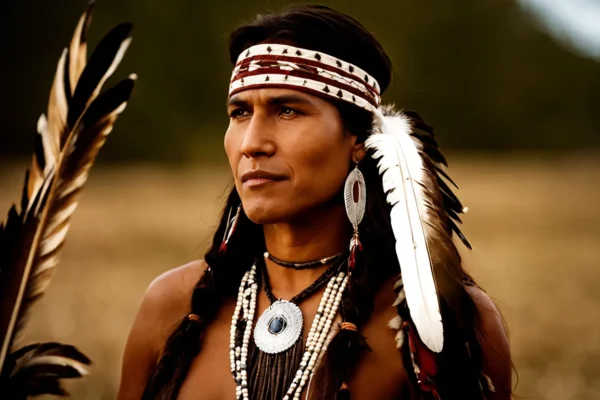Have you ever wondered what a newborn bird’s proper name is? There are a few terminologies to be aware of, and each one corresponds to a distinct developmental stage.
While it’s vital for ornithologists and pet owners who interact closely with different bird species, bird watchers and lovers will find additional interest in defining and comprehending the avian life phases.
We look at the names and life phases of newborn birds in this guide, and we also learn some interesting information. Now let’s get going!
What’s the Name of a Baby Bird?
Although several juvenile birds have names unique to their species, calling a baby bird a chick is often appropriate. Although it’s more realistic to categorize newborn birds according to their developmental stage, this catch-all moniker encompasses the many growth phases.
Learn about three significant bird age groups by reading on.
The Development Stages of Birds
Incubating
For the first few days after hatching, young birds that have just emerged from their eggs are referred to as hatchlings. However, depending on their life plan, the degree of development during hatching varies quite a little across the species.
Less than an hour after hatching, precocial hatchlings, like newborn chickens, are capable of walking about. The altricial songbird hatchlings, on the other hand, are blind, nude, and hardly able to raise their own heads! These hatchlings may spend many weeks confined to the nest and are totally dependent on one or both parents.
Nestling
After around three days in the nest, altricial hatchlings are referred to as nestlings, however, this is not a precise scientific term. Even though they may grow quickly with their parents’ loving care, these newborn birds still depend on them for food and body warmth.
For some little songbirds, the nestling period lasts just a few days, but for huge predators such as eagles, it may last many weeks. The developing chicks will grow quickly during this period and get full feather coverage.
Fledgling
A chick will grow out its contour and flying feathers and start to be ready for life in the big wide world if all goes according to plan throughout the hatchling and nestling periods. Before going on to the next phase of their growth, they will stretch and work their wings and legs in the nest.
Once a young bird has left the nest, it is referred to as a fledgling. Even though it can’t fly yet, it still needs its parents to feed it at this critical stage. Young birds may often be seen jumping around the ground or clinging to trees close to their nest.
After the young have fled the nest, adult birds may occasionally continue to feed them for many weeks or even months. The fledglings must master flying at this critical stage and learn how to feed on their own.
Juvenile
Juvenile is the word used to describe teens in birds. They still somewhat depend on their parents for food and safety, but at this point in their lives, they can mainly take care of themselves if required.
When a bird reaches its juvenile stage, it will often stay with its parents for a few weeks and may still beg for food. Young birds will continue to pick up skills like hunting and food gathering throughout this time by observing their parents and other family members.
Although the plumage of juvenile birds resembles that of adult birds in appearance, they often still lack some of the vivid colors or patterns seen in the adult plumage.
Other Species-Wide Names for Young Birds
Occasionally, young birds are given unique names that are unique to their family or species. Let’s examine a few common instances:
Sure, here’s the organized list:
Waterbirds and Waterfowl
- Duckling: or young duck
- Gosling: the infant goose
- Cygnet: or juvenile swan
- Colt: the infant crane
- Baby Loon: also known as Loonlet
- Puffling: the young puffin
- Baby Sandpiper Peep
- Eaglets (Baby Eagles): Predators of Eagles
- Owlet: or young owl
- Eyas: the baby falcon or hawk
Poultry and Ground Birds
- Keet: a juvenile Guineafowl
- Squealer: the baby grouse
- Cheeper (Baby Partridge)
- Poult: young turkey or chicken
- Squab: young dove or pigeon
- Peachick: or young peafowl
The Value of Adequate Protection and Care
As they grow from embryos in the egg to hatchlings, nestlings, and fledglings, baby birds’ demands vary. When tampering with wild newborn birds, you should always seek the advice of a qualified specialist since during their first few days and weeks they are delicate and sensitive.
Skilled bird breeders and rehabilitators know how to provide growing chicks with a nutritious meal and warmth until they reach an age when they can control their body temperature on their own. Additionally, social contacts are crucial, particularly for young birds who will be released into the wild.
In order to prevent imprinting and help the chicks from failing to recognize themselves as members of their own species, rehabilitators may even dress up as adult birds or use puppet gloves.
Fun Facts Regarding Young Birds
The biggest hatchlings in the world are baby ostriches, with chicks weighing up to two pounds. The Bee Hummingbird chick is presumably the tiniest in the world. From an egg the size of a coffee bean, these tiny babies emerge.
While most songbirds fledge after two to three weeks, certain little passerines—like White-eyes (Zosterops spp.)—may leave the nest as soon as 10 days after hatching.
Bigger altricial birds have a much longer time. For instance, a young Bald Eagle may stay in the nest for more than three months!
Groundbird precocial chicks are fully formed upon hatching and may start feeding themselves on their first day. They depend on their parents, however, to guide them to secure foraging areas and teach them which items to consume.
Some young birds have to learn to “fly” before they can develop flight feathers. For protection from predators, many ducks, geese, and seabirds build their nests in tall tree cavities and cliff ledges. The precocial chicks must plunge to the ocean or ground below as soon as they hatch, often hundreds of feet below!
Despite their stark differences, pigeons and flamingos share an intriguing trait. Baby pigeons and Flamingos both consume special crop milk that their parents make.
Final Thoughts
Before reaching maturity, birds go through a number of phases, just like human children grow from newborns to toddlers and finally into teens. When a newborn bird first emerges from its nest, it is referred to as a hatchling, then a nestling until its flying feathers grow out, and finally a fledgling when it finally leaves the nest.
Even though some bird species have unusual names for their young, naming a juvenile bird a chick is always a good choice!
Although fresh generations of birds hatch and fledge every spring and summer, most humans hardly ever get to observe young birds. Although it’s usually preferable to let young birds be alone, you can encourage our feathered friends this year by building a nest box or two and establishing an environment that is conducive to birds surrounding your house and neighborhood.









